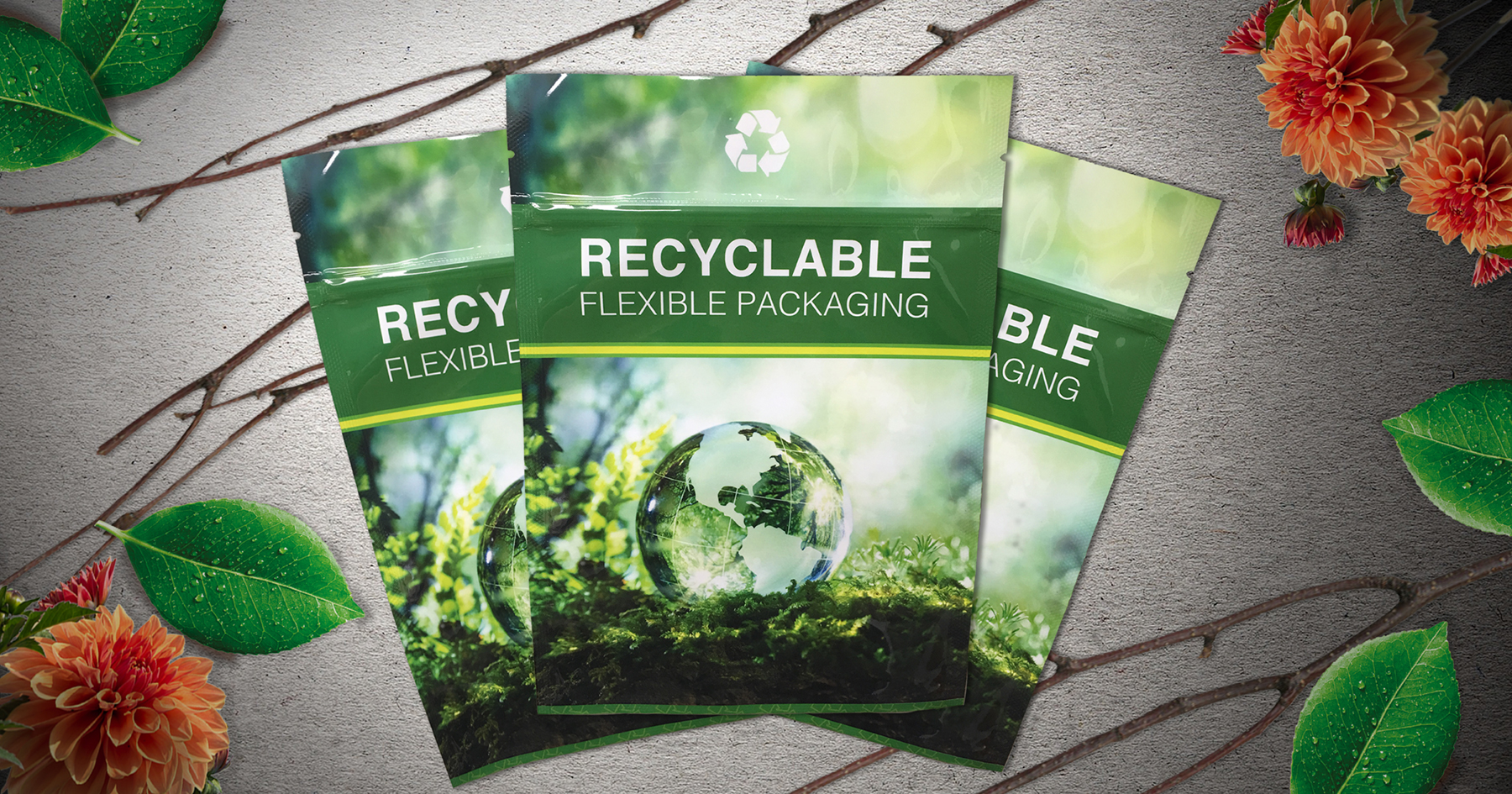SUSTAINABLE LABELS & PACKAGING
As more and more companies commit to sustainability goals, funding and partnerships have sprung into action. The recent industry buzz is all about more collaboration between consumer packaged goods companies, suppliers, and recycling facilities. Whether your customer’s label or packaging goal is biodegradable, compostable, environmentally benign, recyclable, repulpable, has recycled content, is water dissolvable, or is FSC Certified, sustainability is the focus of the material, adhesive, and ink suppliers driving change.
Mactac developed a Simply Sustainable brand that is their initiative to choose environmental best practices, ingrained in responsible innovation, culture, and values.5 SunChemical’s sustainability portfolio supports the five R’s: Create products and technologies that Reuse, Reduce, Renew, Recycle and Redesign to support the transition from a linear to a circular economy, thereby reducing CO2 and environmental impact.1 UPM Raflatac takes a 360° approach to sustainable packaging solutions—from responsible sourcing to manufacturing, services, and design. UPM is committed to its vision of labeling a smarter future–beyond fossils.8 HP is recognized among the 2020 Global 100 Most Sustainable Corporations in the World and has achieved numerous sustainability awards year after year. The HP Indigo press has compostable inks that are certified compatible for recycling.4

Labels
In the label industry, material suppliers are choosing environmental best practices and are building a culture of responsible manufacturing and innovation. They are using less energy for manufacturing and less raw materials, reducing freight (which includes reducing fuel and CO2 emissions), reducing packaging waste (cores, cartons, wrapping, etc.), and increasing productivity. Suppliers are also innovating new products to reduce waste and promote recyclability for the entire supply chain.5
Facestock
- Material suppliers are using post-consumer waste label stock within the product construction.8 UPM Raflatac announced it is the first label material producer to bring a new wood-based polypropylene film material into the market. UPM converts pulp production residue into renewable naphtha, a drop-in raw material for the chemical industry. Replacing fossil raw materials bring substantial climate and environmental benefits. This film will help brand owners who need to replace traditional fossil-based virgin materials with renewable non-fossil-based materials.7
Adhesives
- Adhesives are being formulated with renewable resources.
- Polypropylene label stocks are being manufactured with an adhesive that will float off PET clamshells, bottles, and other containers during the washing process for recycling, leaving no adhesive residue behind. This allows the recycled PET to be utilized for new high-value products creating a circular economy. 5
- Recycle-compatible adhesives, which when applied to paper, can be recycled with paper that is repulpable.5
Liners
- Material suppliers are making thinner liners, which reduce environmental impact and provide up to 15% more labels per roll.5
- Instead of bleached liners, Kraft liners are being used to reduce carbon emissions.5
- Suppliers are using recycled and post-consumer waste in their liners.5
Shrink Sleeves
- New resin technology has been developed, allowing the PET shrink sleeves to be recycled together with PET bottles.
- Ink supplier, SunChemical®, has developed washable ink technologies to allow increased recyclability of shrink sleeves. The inks are formulated to detach from the film so that the ink particles can be filtered from caustic wash solutions in typical recycling processes. The inks removed do not bleed or stain the PET flakes that are being recycled.1
Flexible Packaging
Made possible by material advancements and new technology, flexible packaging’s growth has been primarily due to a need for economic and sustainable alternatives to ridged packaging.
- Fifty pounds of glass bottles equal one and a half pounds of pouches. An unfilled 8-ounce glass bottle with a metal cap weighs 198.4 grams. In comparison, flexible material with the same product capacity weighs 5.7 grams. For equal amounts of product, 26 truckloads of bottles are needed, but only one truckload of unfilled 8 oz. pouches.9
- In addition to flexible packaging using less energy and generating less CO2 emissions in transportation, it also has reduced mass and contributes less to landfills.9
- The Flexible Plastic Pouches Market will be worth $73.5 Billion by 2026. This increase in demand is due to flexible packaging being lightweight, convenient, and a cost-effective packaging solution for food and beverage applications.3
- The Polypropylene Recycling Coalition will distribute around $1 million in catalytic grants to advance polypropylene recycling in the United States. This investment targets sortation of polypropylene (PP) at mechanical recycling facilities and local consumer education efforts. The funds will improve curbside PP recycling for an additional 3% of all U.S. households and increase the recovery of 4.3 tons of PP annually.2
Sustainability is a global issue and is no longer a future problem; it is a personal and corporate responsibility. How are you answering your customer’s sustainability goals for labels and packaging?
References
1 Nikola Juhasz, Global Technical Director of Sustainability at SunChemical® podcast: (packagingstrategies.com/media/podcasts)
2 Flexible Packaging Magazine (flexpackmag.com)
3 Polypropylene recycling hitting its stride in 2021 article, Flexible Packaging Magazine (flexpackmag.com)
4 Hewlett-Packard® 4AA7-8653ENW.pdf (hp.com)
5 Mactac® | Simply Sustainable Roll Label Solutions (mactac.com)
6 Accucote® Sustainable Products (acucote.com)
7 UPM Raflatac® responds to the growing need for renewable packaging materials by unveiling the industry’s first wood-based film material (upmraflatac.com)
8 Sustainable Labels (upmraflatac.com)
9 FPA, “Flexible Packaging: Less Resources. Less Footprint. More Value.” Case Study Brochure (flexpack.org)
